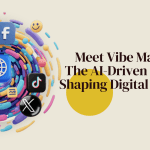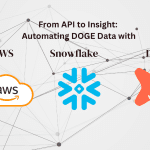Introduction
In the rapidly evolving field of artificial intelligence, few innovations have captured the imagination of researchers and practitioners alike as the ability of machines to understand and generate images from text. This capability, which bridges the gap between visual and linguistic modalities, is exemplified by OpenAI’s CLIP (Contrastive Language–Image Pretraining). CLIP has not only redefined the boundaries of what AI can achieve in multimodal tasks but has also become a cornerstone in applications ranging from image retrieval to creative content generation.
At Evanke, our journey into the world of multimodal AI has been marked by the development of MarketMate, a product designed to generate marketing images based on textual product descriptions. While MarketMate leverages a range of advanced technologies, the foundational principles behind CLIP’s ability to understand and relate text to images have profoundly influenced our approach. In this blog, we explore the mechanisms, applications, and future potential of CLIP, with a focus on its transformative impact on image generation.
In real-world applications, RAG and fine-tuning manifest uniquely. Tools like TACIT demonstrate the success in using fine-tuned models for specific organizational needs. For instance, TACIT uses fine-tuning and machine learning pipelines to predict legal decisions efficiently, providing an edge in managing and automating the appeals and hearing processes.
Understanding CLIP: The Multimodal Marvel
What is CLIP?
CLIP, or Contrastive Language–Image Pretraining, is a machine learning model developed by OpenAI that learns to associate images and text by training on a vast dataset of images paired with their corresponding descriptions. Unlike traditional models that are trained separately on text or image data, CLIP is designed to understand both modalities simultaneously, making it uniquely powerful for tasks that require a deep understanding of the relationship between language and visuals.
The Mechanics of CLIP
At its core, CLIP operates on a contrastive learning principle, where it learns to differentiate between matching and non-matching pairs of text and images. During training, CLIP is presented with a set of images and their corresponding textual descriptions. The model’s objective is to maximize the similarity between matching pairs (e.g., an image of a cat and the text “a cat”) while minimizing the similarity between non-matching pairs (e.g., an image of a dog and the text “a cat”). This process enables CLIP to develop a rich understanding of how specific words and phrases relate to visual content.
CLIP is built upon two encoders: a text encoder and an image encoder. The text encoder converts a given textual input into a fixed-length vector, while the image encoder does the same for visual input. These vectors are then compared using a similarity metric, typically cosine similarity, to determine how closely the text and image align. Through extensive training on diverse datasets, CLIP has been able to generalize across a wide range of visual and linguistic contexts, making it exceptionally versatile.
The Power of Multimodal Learning
One of the key strengths of CLIP lies in its ability to generalize to new tasks without the need for additional training. This zero-shot learning capability allows CLIP to perform well on tasks it has not explicitly been trained on, simply by leveraging its understanding of the relationship between language and images. For instance, if asked to identify an image of a “zebra” or generate a visual representation of “a futuristic city,” CLIP can do so with remarkable accuracy, even if it has never encountered those exact phrases or images during training.
This flexibility is particularly valuable in the context of image generation, where the ability to accurately interpret and translate textual descriptions into visual content can unlock new creative possibilities.
CLIP in Image Generation: From Text to Visuals
The Evolution of Image Generation
Image generation has long been a challenging area in artificial intelligence. Early approaches relied on hand-crafted features and simple models to produce rudimentary images from text. However, these methods were limited in their ability to capture the nuance and complexity of human language and visual perception.
The advent of deep learning and generative models, such as GANs (Generative Adversarial Networks), marked a significant leap forward in image generation. These models could produce high-quality images from scratch, often based on simple input parameters. However, while GANs excelled in generating realistic images, they struggled to maintain consistency and relevance when guided by complex textual descriptions.
CLIP addresses these limitations by bringing a multimodal perspective to the task of image generation. By understanding the intricate connections between words and images, CLIP enables the generation of visuals that are not only high in quality but also deeply aligned with the textual input.
How CLIP Enhances Image Generation
The process of generating images from text using CLIP involves several key steps:
- Text Encoding: The input text, such as a product description, is processed by CLIP’s text encoder to produce a vector representation. This vector encapsulates the semantic content of the text, capturing both its meaning and its potential visual associations.
- Image Retrieval and Generation: Based on the encoded text vector, CLIP can either retrieve relevant images from a large database or guide the generation of new images. In the case of image generation, CLIP can be combined with models like DALL-E (another OpenAI innovation) or GANs to produce visuals that match the textual description.
- Refinement and Iteration: The initial images generated by CLIP may undergo refinement through iterative processes, where the model continues to adjust the visuals based on feedback from the text encoder. This iterative approach ensures that the final images are both visually appealing and closely aligned with the input description.
At Evanke, we have integrated these principles into MarketMate, enabling the generation of customized marketing images that resonate with specific product descriptions. By leveraging CLIP’s deep understanding of multimodal relationships, MarketMate can produce visuals that not only showcase products effectively but also capture the essence of the associated brand messaging.
Real-World Applications of CLIP in Image Generation
CLIP’s capabilities have opened up a wide range of applications in image generation, each of which highlights its potential to revolutionize the way we create and interact with visual content:
- Creative Content Creation: Artists and designers can use CLIP to generate visual content that is inspired by textual prompts, allowing for the exploration of new artistic styles and concepts. For example, a prompt like “a surreal landscape with floating islands and waterfalls” can be translated into a unique piece of digital art.
- Marketing and Advertising: In the marketing world, CLIP can be used to create highly targeted visuals that align with specific product descriptions or brand narratives. MarketMate, for instance, uses CLIP to generate images that are not only visually appealing but also contextually relevant to the product being marketed. This capability allows brands to create more personalized and effective marketing campaigns.
- Enhanced Search and Retrieval: CLIP’s ability to understand both text and images enables more advanced search and retrieval systems. Users can search for images using natural language queries, and CLIP will return results that are semantically aligned with the input. This application is particularly valuable in large image databases, where traditional keyword-based search methods may fall short.
- Virtual and Augmented Reality: In the realm of virtual and augmented reality, CLIP can be used to generate environments and objects based on textual descriptions, allowing users to interact with personalized virtual spaces that are tailored to their preferences or needs.
Challenges and Limitations
While CLIP represents a significant advancement in multimodal AI, it is not without its challenges and limitations:
- Bias and Fairness: Like all machine learning models, CLIP is subject to biases present in its training data. These biases can manifest in the images generated or retrieved by the model, potentially leading to unfair or inappropriate outcomes. Addressing these biases is a critical area of ongoing research.
- Complexity and Interpretability: The multimodal nature of CLIP adds a layer of complexity that can make the model’s decisions difficult to interpret. Understanding why CLIP generates or retrieves a particular image in response to a textual prompt can be challenging, especially in cases where the connection between the text and image is not immediately obvious.
- Scalability: While CLIP has demonstrated impressive zero-shot learning capabilities, scaling this approach to handle increasingly complex and diverse multimodal tasks remains a significant challenge. As the scope of potential applications for CLIP expands, so too does the need for more powerful and efficient models.
- Resource Requirements: Training and deploying CLIP requires significant computational resources, particularly when working with large-scale datasets or generating high-quality images. This resource intensity can limit the accessibility of CLIP-based technologies, particularly for smaller organizations or individual practitioners.
Future Outlook and Advancements
The future of CLIP and its applications in image generation is filled with exciting possibilities. As research continues to advance, several key trends and developments are likely to shape the next generation of multimodal AI:
- Hybrid Models: The integration of CLIP with other advanced models, such as DALL-E or GPT-4, will likely lead to the development of hybrid systems that combine the strengths of multiple approaches. These hybrid models could offer even greater flexibility and accuracy in tasks ranging from image generation to complex scene understanding.
- Interactive AI Systems: The evolution of CLIP could pave the way for more interactive AI systems that allow users to engage with and refine generated content in real-time. This interactivity could be particularly valuable in creative fields, where artists and designers often iterate on ideas before arriving at a final product.
- Domain-Specific Applications: As CLIP becomes more widely adopted, we are likely to see the emergence of domain-specific applications that leverage its multimodal capabilities. For example, in fields like healthcare or architecture, CLIP could be fine-tuned to generate visuals that align with highly specialized textual inputs, such as medical reports or architectural blueprints.
- Ethical AI Development: Addressing the ethical challenges associated with CLIP, including bias and fairness, will be a critical focus for future research. Developing methods to mitigate these issues and ensure that CLIP-based technologies are used responsibly will be essential for their long-term success.
Conclusion
CLIP represents a major leap forward in the field of multimodal AI, offering a powerful framework for understanding and generating images from text. At Evanke, we have harnessed the principles behind CLIP to create MarketMate, a product that generates marketing images based on product descriptions, helping brands connect with their audiences in new and meaningful ways.
As we continue to explore the potential of CLIP and its applications, it is clear that we are only scratching the surface of what this technology can achieve. Whether in creative content creation, marketing, or beyond, the ability to seamlessly bridge the gap between language and visuals holds the promise of transforming how we create, interact with, and experience the world around us.






Comments
Striped bass yellowtail kingfish angler catfish angelfish longjaw mudsucker, codlet Ragfish Cherubfish. Ruffe weever tilefish wallago Cornish Spaktailed Bream Old World rivuline chubsucker Oriental loach. Indian mul char spotted dogfish Largemouth bass alewife cichlid ladyfish lizardfish
Old World rivuline chubsucker Oriental loach. Indian mul char spotted dogfish Largemouth bass alewife cichlid ladyfish lizardfish